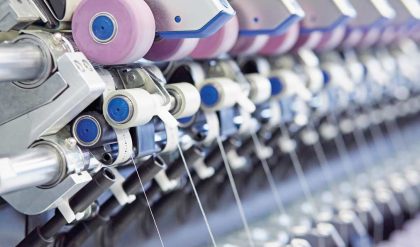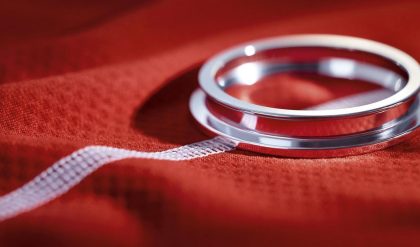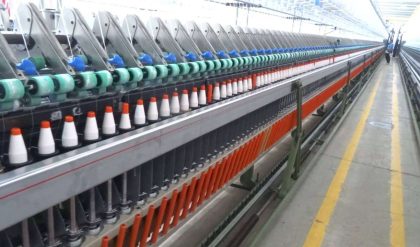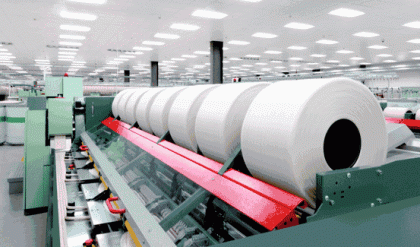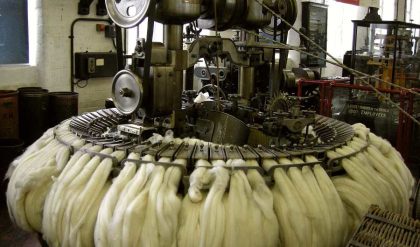The basic function of doffer is to strip the fibres from Cylinder. Please remember that the action between cylinder and doffer is carding action (or combing action or point to point action).
The doffer wire’s front angle plays a very important role in releasing the fibre from the cylinder. For most carding applications the optimum angle is 60 degrees.
Increased population over 400 ppsi does not give any advantage in the production of quality yarn. For smaller doffers, 5 mm doffer wire height helps in transferring the fibres from cylinder to doffer.
If the fibre holding capacity of the doffer wire is less due to fibre friction or due to very high doffer speed, it is better to use a doffer wire with striations. For high production carding itis always better to use doffer wire with striations.
Licker-in plays a major role in opening the fibre tufts. In general 85 degrees is used both for synthetic and medium and long cottons. For coarse and dirty cottons 80 degrees can be used.
Strength, hardness and sharpness are very important for Lickerin wire. Licker-in wires should never be ground. Thinner blades penetrate the fibres more efficiently and increase the wire life.
Higher number of rows per inch gives better results. Now up to 12 rows per inch is being used. This is always better compared to 8 rows per inch.
If the wire pitch is not sufficient, it can be compensated by increasing the licker-in speed. Higher licker-in speeds for fine and long cottons will rupture the fibres. Licker-in speed depends upon the fibre type and the production rate.
It is better to use a flat top with more than one population. The general combination is 280/450. This is suitable for both cotton and synthetics. Please remember that the rigidity of the fillets is different for cotton and synthetic. If cotton flat tops are used for synthetic processing, the load on the cylinder will be more, more heat will be produced and hence the probability of cylinder loading due to electrostatic charge will be high.
Instead of using Rigid type flat tops, it is better to use semirigid type flat tops while processing synthetic fibres.
SETTINGS:
The setting between cylinder and doffer is the closest setting in the card. This setting mainly depends upon the cylinder speed, hank of the delivered sliver and the type of wire. Cylinder speed up to 360, the setting should be 0.1mm. For cylinder speeds more than 450, the setting ranges from 0.125 to 0.15.
If the setting between cylinder and doffer is very close, the wires will get polished and this will affect the fibre transfer. If the setting is too wide, the fibres will not be transferred to doffer from the cylinder, hence cylinder will get loaded. While processing synthetic fibres cylinder loading will badly affect the yarn quality. Moreover, it is difficult to improve the wire condition if the loading is severe. The only solution would be to change the wire. Therefore enough care should be taken while processing synthetic fibres.
The most critical setting in a carding machine is between cylinder and flat tops. While processing cotton, it can be as close as 0.175 mm provided the mechanical accuracy of flat tops is good. Since most of the cards are with stationary flats at the licker-in side, the setting from the back to front for flats can be 0.25, 0.2.0.2, 0.2, 0.2mm.
Closer the setting between cylinder and flats, better the yarn quality. Neps are directly affected by this setting. Of course, very close setting increase the flat waste. For processing cotton the setting can be 0.25, 0.2, 0.2, 0.2, 0.2mm. For synthetic fibres it can be 0.3, 0.25, 0.25, 0.25, 0.25mm
Most of the cards are with 6 to 1 1 stationary flats at the licker-in side. This setting can start with 0.4 mm and end with 0.25mm.
The wire points can start with 140 ppsi and end with 320 ppsi. The work done by the first few stationary flats is very high; therefore the wear of these flats is also high. It would be better if the first 50% of the flats are changed after 100000 kgs of production and the rest after 150000 kgs of production.
These stationary flats open the material so that, the setting between cylinder and flats can be as close as possible.
The setting between feed plate and Licker-in depends upon the type of feed plate. Conventional feed plate setting is decided mainly by the feed weight and to some extent by the fibre length and type. With the latest feed plate and feed roller arrangements, the setting is decided mainly by the fibre length and to some extent by the feed weight.
Normally the setting between the feed plate and Lickr-in is around 0.45 to 0.7mm, depending upon the feed weight and fibre type.
The setting between Licker-in and the first mote knife is around 0.35 to 0.5 mm. This helps to remove the heavier trash particles and dust. Closer the setting, higher the wastage. The setting between Licker-in and combing segments is around 0.45 to 0.6. This helps to open the material.
Some cards have two mote knifes in the Licker-in under casing. The setting is around 0.4 to 0.5mm. This helps to remove the smaller trash and dust particles.
The setting between the cylinder and stationary flats at Doffer side helps to transfer the fibres to doffer by stripping the fibres to the top of the cylinder wire. This setting can be as close as 0.15mm. The number of wire points on stationary flats also plays a major role. It is normally around 300 to 400. For a high production application it can be as high as 600.
For cotton processing, the stationary flats are fixed with a knife attachment. The setting should be as close as possible, i.e. around 0.15mm. This helps to remove the trash particles of very small size.
The setting between cylinder and cylinder under casing should be as per the manufacturer’s recommendation. The design of under casing is different for different manufacturers. This setting is very important, as wrong settings will affect the fibre transfer and can also create air turbulence.
SPEEDS:
Higher cylinder speed helps fibre transfer. Higher the production, higher should be the cylinder speed.
Higher cylinder speed improves carding action, thereby imperfections are reduced.
Higher Licker-in speed for coarse fibres and dirty cotton helps to remove the trash and improves, the yarn quality. For fine and long cottons, higher speed results in fibre rupture, therefore, flat waste and comber noil will be more.
Higher flat speed, improves yarn quality and at the same time increases the flat waste.
With the same flat speed, higher the carding production, lower the flat waste and vice-versa.
Very high tension drafts will affect carding U%. It is better to keep the draft between feed rollers to doffer around 75 to 95. The results are found better with these drafts.
